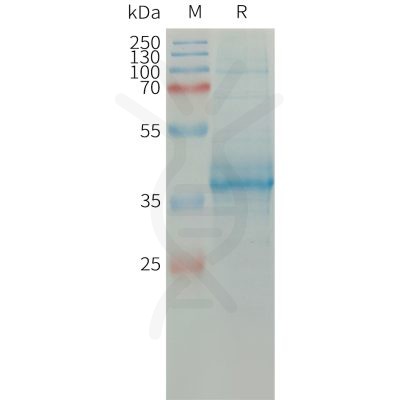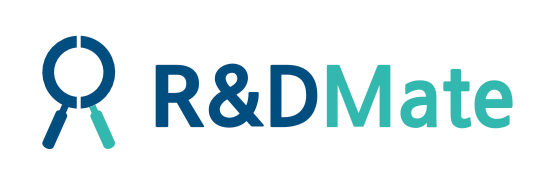| TARGET | |
|---|---|
| SYNONYMS |
SCYA11 |
| DESCRIPTION |
Recombinant Human CCL11 Protein with C-terminal human Fc tag |
| DELIVERY |
In Stock |
| UNIPROT ID |
P51671 |
| EXPRESSION HOST |
HEK293 |
| TAG |
C-Human Fc Tag |
| MOLECULAR CHARACTERIZATION |
CCL11(Thr30-Pro97) hFc(Glu99-Ala330) |
| MOLECULAR WEIGHT |
The protein has a predicted molecular mass of 34.0 kDa after removal of the signal peptide. The apparent molecular mass of CCL11-hFc is approximately 35-55 kDa due to glycosylation. |
| PURITY |
The purity of the protein is greater than 95% as determined by SDS-PAGE and Coomassie blue staining. |
| FORMULATION & RECONSTITUTION |
Lyophilized from sterile PBS, pH 7.4. Normally 5 % – 8% trehalose is added as protectants before lyophilization. Please see Certificate of Analysis for specific instructions of reconstitution. |
| STORAGE & SHIPPING |
Store at -20°C to -80°C for 12 months in lyophilized form. After reconstitution, if not intended for use within a month, aliquot and store at -80°C (Avoid repeated freezing and thawing). Lyophilized proteins are shipped at ambient temperature. |
| BACKGROUND |
This antimicrobial gene is one of several chemokine genes clustered on the q-arm of chromosome 17. Chemokines form a superfamily of secreted proteins involved in immunoregulatory and inflammatory processes. The superfamily is divided into four subfamilies based on the arrangement of the N-terminal cysteine residues of the mature peptide. This chemokine, a member of the CC subfamily, displays chemotactic activity for eosinophils, but not mononuclear cells or neutrophils. This eosinophil-specific chemokine is thought to be involved in eosinophilic inflammatory diseases such as atopic dermatitis, allergic rhinitis, asthma and parasitic infections. [provided by RefSeq, Sep 2014] |
| USAGE |
Research use only |
1
/
의
1
Dima Biotech
SKU(재고 관리 코드):PME101315
Human CCL11 Protein, hFc Tag
Human CCL11 Protein, hFc Tag
PRODUCT DATA
IMAGES

Figure 1.Human CCL11 Protein, hFc Tag on SDS-PAGE under reducing condition.
Share


